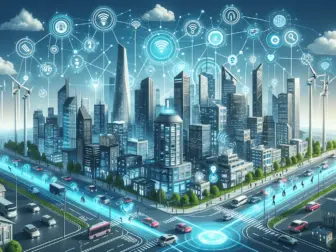Tag - Environmental IoT
Unveiling the Power of Environmental IoT: Smart Solutions for a Sustainable Future
Unveiling the Power of Environmental IoT: Smart Solutions for a Sustainable Future
In an age where climate change and environmental degradation pose significant threats to our planet, leveraging technology for environmental conservation has become crucial. Among the various tech innovations, Environmental Internet of Things (IoT) stands out as a transformative approach to monitor, manage, and protect our natural resources. Environmental IoT refers to the network of interconnected devices that collect, transmit, and analyze data related to environmental conditions, such as air and water quality, weather patterns, and wildlife activity.
One of the core strengths of Environmental IoT is its ability to provide real-time data, enabling immediate responses to environmental incidents. Sensors can detect pollutants at the moment they are released into the atmosphere or water bodies and alert relevant authorities to act promptly. This rapid detection capability not only minimizes the impact of environmental disasters but also deters potential violators by increasing the likelihood of detection and enforcement of environmental laws.
Another significant aspect of Environmental IoT is its contribution to urban planning and sustainable development. Smart cities harness IoT technologies to monitor traffic flows, energy consumption, and waste management systems. This data informs decision-making processes, leading to optimized resource use and reduced carbon footprints. Smart sensors, for example, can adjust street lighting based on movement and ambient light, saving energy and reducing light pollution at the same time.
In the agricultural sector, Environmental IoT devices are revolutionizing the way farming is done. Precision agriculture uses sensors to monitor soil moisture, crop health, and weather conditions. This enables farmers to make better decisions about when to irrigate, plant, or harvest, leading to increased crop yields while conserving water and reducing the use of fertilizers and pesticides. Such practices not only improve the sustainability of farming operations but also help in preserving the surrounding ecosystems.
Biodiversity conservation is another area where Environmental IoT is making strides. By setting up camera traps and acoustic sensors in wildlife habitats, researchers can monitor animal populations and behaviors without disturbing them. This technology also plays a pivotal role in preventing poaching and illegal logging by providing park rangers with the tools they need to monitor protected areas more effectively.
Despite its numerous benefits, the implementation of Environmental IoT is not without challenges. Concerns related to privacy, security, and data ownership must be addressed to prevent misuse of sensitive environmental data. Moreover, the deployment of IoT devices in natural environments must be done responsibly to avoid potential ecological disturbances. It’s also essential to ensure these technologies are accessible to developing countries, where the impact of environmental degradation can be most severe.
In conclusion, Environmental IoT serves as a beacon of hope in the pursuit of a more sustainable and resilient planet. By combining the ingenuity of human innovation with the intrinsic value of natural ecosystems, we are on the cusp of witnessing a harmonious coexistence between technology and the environment. With further research, international collaboration, and ethical stewardship, Environmental IoT can provide smart solutions that ensure the well-being of our planet for generations to come.
